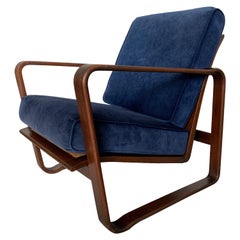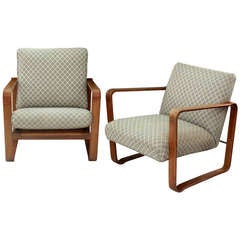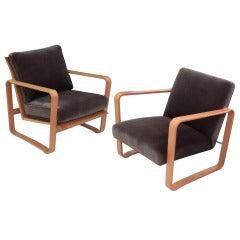Wormley Morris Chair
Vintage 1950s American Mid-Century Modern Armchairs
Mahogany
Recent Sales
Vintage 1940s American Lounge Chairs
Vintage 1940s American Lounge Chairs
Vintage 1940s American Mid-Century Modern Lounge Chairs
Vintage 1940s American Mid-Century Modern Lounge Chairs
20th Century American Mid-Century Modern Benches
Brass
Vintage 1940s American Mid-Century Modern Armchairs
Fabric, Mahogany
Vintage 1940s American Mid-Century Modern Lounge Chairs
Bouclé, Paint, Wood
Vintage 1950s American Mid-Century Modern Slipper Chairs
Wool, Mohair, Mahogany
Vintage 1940s American Mid-Century Modern Lounge Chairs
Steel
Vintage 1940s American Armchairs
People Also Browsed
2010s Mexican Bauhaus Chairs
Metal, Brass
21st Century and Contemporary Italian Benches
Wood, Cedar
Vintage 1950s American Mid-Century Modern Sectional Sofas
Upholstery, Mahogany
Vintage 1950s American Mid-Century Modern Dining Room Chairs
Textile
Vintage 1930s French Modern Sofas
Mahogany
Vintage 1980s American Mid-Century Modern Lounge Chairs
Brass
Mid-20th Century Danish Scandinavian Modern Armchairs
Fabric, Teak
Antique Late 19th Century Finnish Folk Art Chairs
Pine
Vintage 1960s French Mid-Century Modern Coffee and Cocktail Tables
Iron
Vintage 1940s French Ashtrays
Brass
Vintage 1950s French Mid-Century Modern Armchairs
Leather
Vintage 1950s French Art Deco Side Tables
Brass, Iron
21st Century and Contemporary American Mid-Century Modern Stools
Sheepskin, Maple
Vintage 1920s Danish Lounge Chairs
Brass
Vintage 1940s Ashtrays
Brass
Vintage 1950s European Ashtrays
Brass
Wormley Morris Chair For Sale on 1stDibs
How Much is a Wormley Morris Chair?
Edward Wormley for sale on 1stDibs
As the longtime director of design for the Dunbar furniture company, Edward Wormley was, along with such peers as George Nelson at Herman Miller Inc., and Florence Knoll of Knoll Inc., one of the leading forces in bringing modern design into American homes in the mid-20th century. Not an axiomatic modernist, Wormley deeply appreciated traditional design, and consequently his vintage seating, storage cabinets, bar carts and other work has an understated warmth and a timeless quality that sets it apart from other furnishings of the era.
Wormley was born in rural Illinois and as a teenager took correspondence courses from the New York School of Interior Design. He later attended the Art Institute of Chicago but ran out of money for tuition before he could graduate. Marshall Field hired Wormley in 1930 to design a line of reproduction 18th-century English furniture; the following year he was hired by the Indiana-based Dunbar, where he quickly distinguished himself. It was a good match.
Dunbar was an unusual firm: it did not use automated production systems; its pieces were mostly hand-constructed. For his part, Wormley did not use metal as a major component of furniture; he liked craft elements such as caned seatbacks, tambour drawers, or the woven-wood cabinet fronts seen on his Model 5666 sideboard of 1956. He designed two lines for Dunbar each year — one traditional, one modern — until 1944, by which time the contemporary pieces had become the clear best sellers.
Many of Wormley’s signature pieces — chairs, sofas, tables and more — are modern interpretations of traditional forms. His 1946 Riemerschmid Chair — an example is in the collection of the Museum of Modern Art — recapitulates a late 19th-century German design. The long, slender finials of his Model 5580 dining chairs are based on those of Louis XVI chairs; his Listen-to-Me Chaise (1948) has a gentle Rococo curve; the “Precedent” line that Wormley designed for Drexel Furniture in 1947 is a simplified, pared-down take on muscular Georgian furniture. But he could invent new forms, as his Magazine table of 1953, with its bent wood pockets, and his tiered Magazine Tree (1947), both show. And Wormley kept his eye on design currents, creating a series of tables with tops that incorporate tiles and roundels by the great modern ceramicists Otto and Gertrud Natzler.
As the vintage items on 1stDibs demonstrate, Edward Wormley conceived of a subdued sort of modernism, designing furniture that fits into any decorating scheme and does not shout for attention.
Finding the Right Lounge-chairs for You
While this specific seating is known to all for its comfort and familiar form, the history of how your favorite antique or vintage lounge chair came to be is slightly more ambiguous.
Although there are rare armchairs dating back as far as the 17th century, some believe that the origins of the first official “lounge chair” are tied to Hungarian modernist designer-architect Marcel Breuer. Sure, Breuer wasn’t exactly reinventing the wheel when he introduced the Wassily lounge chair in 1925, but his seat was indeed revolutionary for its integration of bent tubular steel.
Officially, a lounge chair is simply defined as a “comfortable armchair,” which allows for the shape and material of the furnishings to be extremely diverse. Whether or not chaise longues make the cut for this category is a matter of frequent debate.
The Eames lounge chair, on the other hand, has come to define somewhat of a universal perception of what a lounge chair can be. Introduced in 1956, the Eames lounger (and its partner in cozy, the ottoman) quickly became staples in television shows, prestigious office buildings and sumptuous living rooms. Venerable American mid-century modern designers Charles and Ray Eames intended for it to be the peak of luxury, which they knew meant taking furniture to the next level of style and comfort. Their chair inspired many modern interpretations of the lounge — as well as numerous copies.
On 1stDibs, find a broad range of unique lounge chairs that includes everything from antique Victorian-era seating to vintage mid-century modern lounge chairs by craftspersons such as Hans Wegner to contemporary choices from today’s innovative designers.


